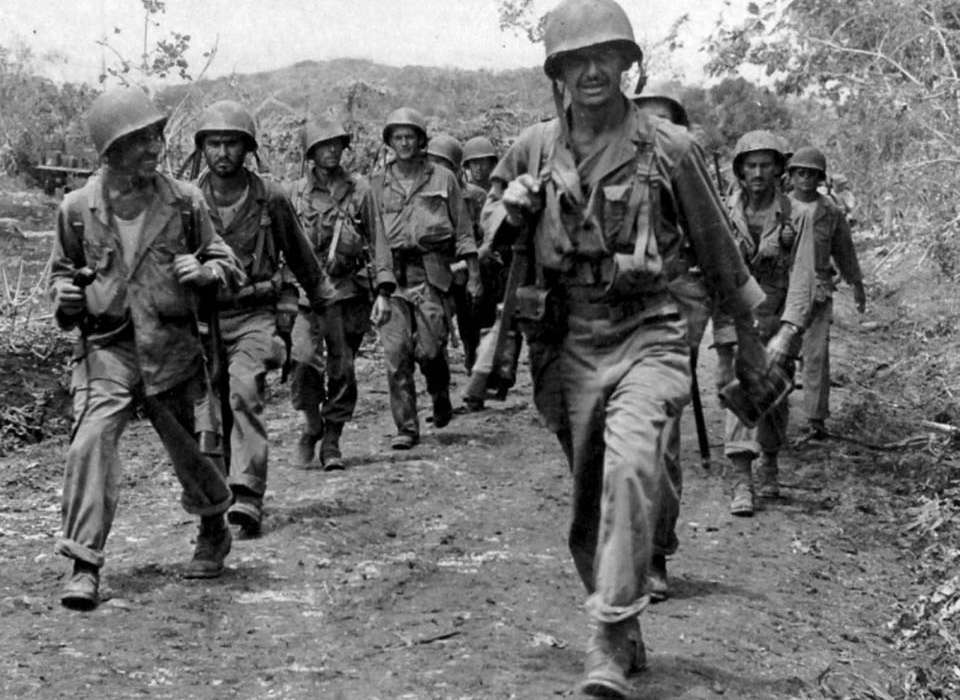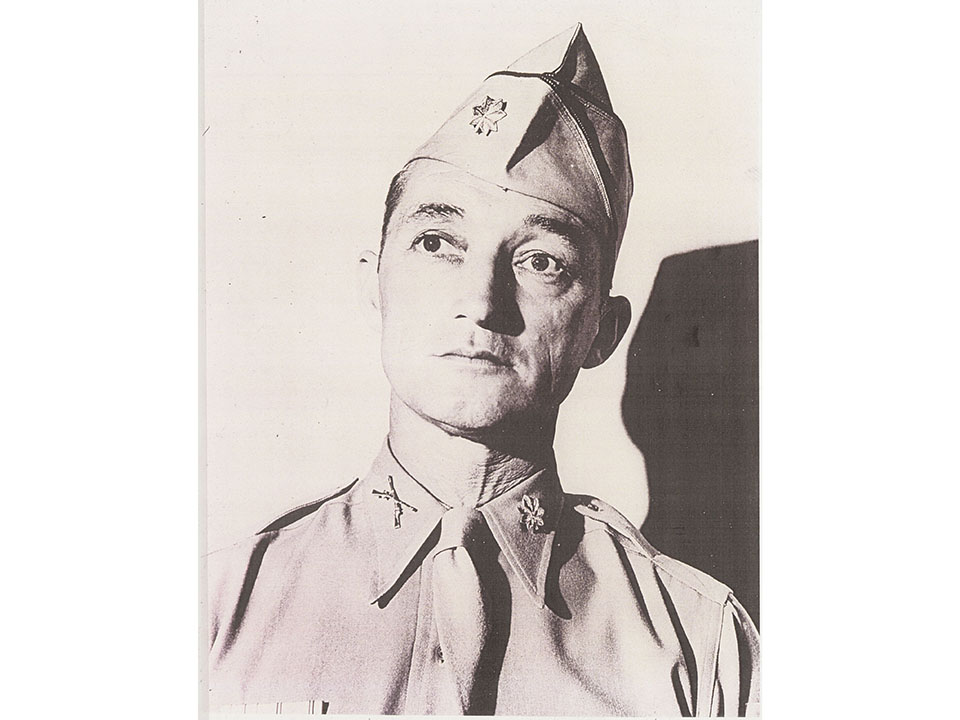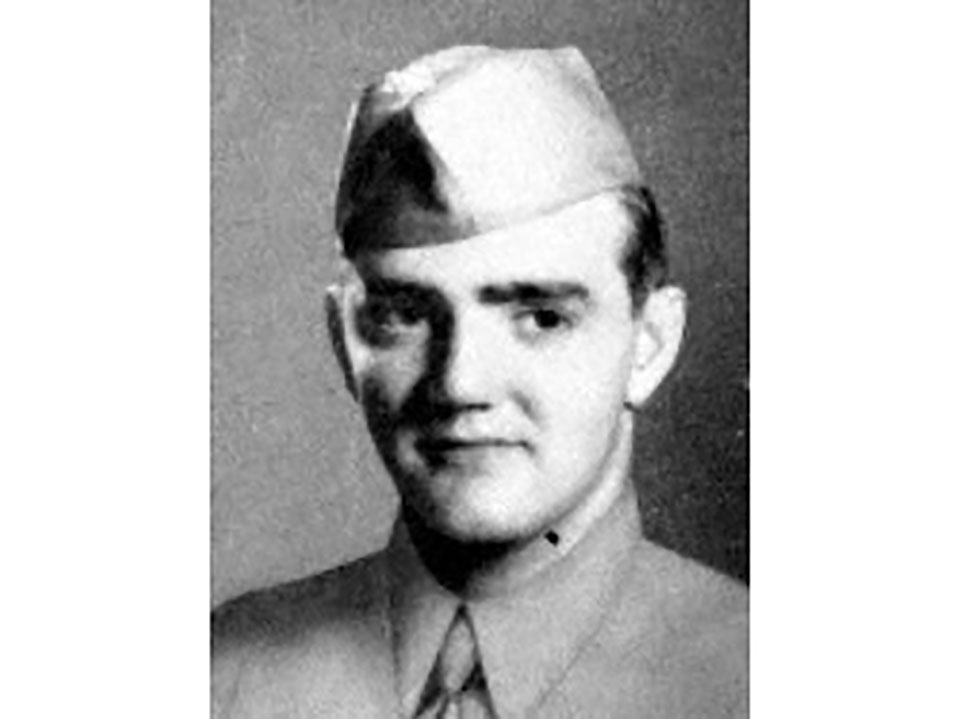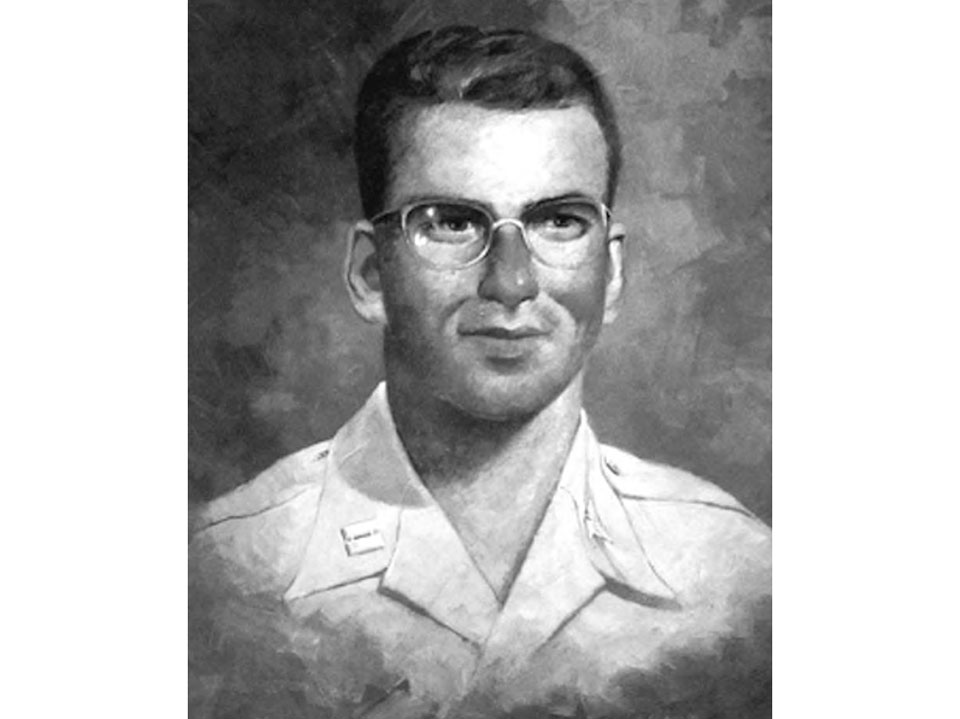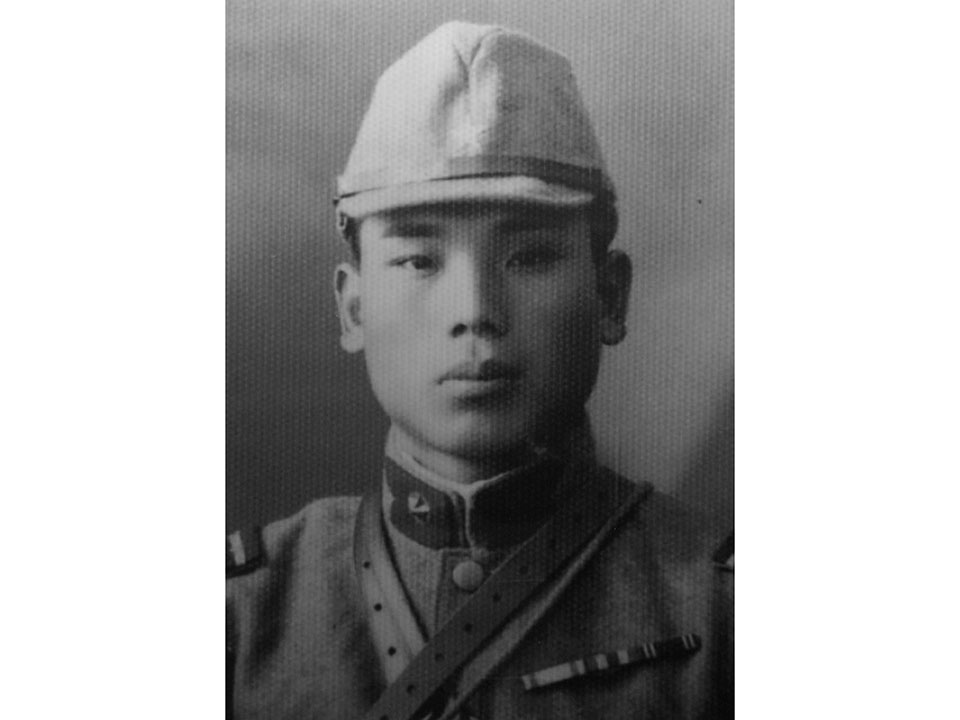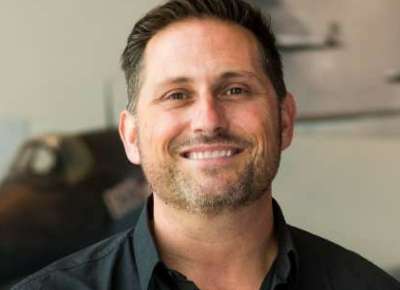Top Image: 27th Infantry Division soldiers advancing during the Saipan Campaign. Photo courtesy of Col. Richard Goldenberg.
After three weeks of fighting on Saipan, two-thirds of the island was in US hands. The 2nd Marine Division, the US Army 27th Infantry Division, and the 4th Marine Division had advanced northward from landing beaches in the southwest and driven the Japanese into the northern corner of the island. By July 6,1944, the US Army’s 27th Infantry Division held the line from the west coast, and tied in with the 4th Marine Division on its right flank. The narrowing island had pinched the 2nd Marine Division out of the line the day before, and it was placed in reserve.
For Lt. General Yoshitsugu Saito, the overall commander of Japanese forces on Saipan, and the remaining 4,000-plus Japanese troops in the northern corner of the island, there was no place left to retreat. Their backs were against the sea, and surrender was an unthinkable option. On the evening of July 6, Gen. Saito ordered all able-bodied troops and civilians to participate in a final Banzai attack before daybreak the next morning.
First and second battalions of the 105th Infantry Regiment, 27th Infantry Division, were the westernmost units on the line by the evening of July 6. Lt. Colonel William O’Brien’s first battalion was dug in about 250 yards from the beach, and Major Edward McCarthy’s second battalion held the line from the first battalion’s left flank to the beach. O’Brien was aware of a gap in the line between first and second battalion and requested reinforcements, but none were available. O’Brien tried to shore up the hole in the line by positioning his anti-tank weapons to cover the gap.
O’Brien was from Troy, New York, and had served in the 27th Infantry Division back when it was a National Guard unit from upstate New York during World War I. After being called into federal service in October 1940, soldiers from all over the US joined the division, but there was still a large contingent of New York State natives in the 27th.
Private Thomas Baker, also hailing from Troy, was a rifleman in Company A of the 105th. Baker had distinguished himself earlier in the campaign on Saipan by single-handedly destroying an enemy strongpoint that was holding up his company’s advance. On July 6, Baker was occupying a foxhole on the frontline.
Captain Benjamin Salomon was running second battalion’s aid station, which was about 50 yards to the rear of the frontline on July 6. Salomon was a dentist, but volunteered to take over the aid station when the battalion surgeon had been wounded. Salomon graduated from the USC Dental School in 1937 and started his own practice. In 1940, he was drafted into the army and initially served as a private in the infantry. In 1942, he was reassigned to the Army Dental Corps and commissioned as a First Lieutenant.
Just after dark, the Japanese troops began assembling for their final attack. Beer and sake was consumed in large quantities, and all through the night of July 6, Japanese soldiers were probing the American frontline, searching for any weak spot they could find. Among the Japanese officers who would lead the attack was Captain Sakae Oba. Unlike Gen. Saito, who would commit suicide in his command post, Oba and 200 other officers would be in the first rank of the largest banzai attack of the war.
It was about 0445 on the morning of July 7 when they attacked. First, came the Japanese officers, waving their swords over their heads and screaming at the top of their lungs, closely followed by thousands of troops. They came right through the gap between the first and second battalions. Major McCarthy described the attack as looking like a cattle stampede from a western movie, except the Japanese just kept on coming.
The Japanese attack burst through the American lines and was cutting it up into tiny pockets of resistance. Lt. Col. O’Brien had two pistols in hand, shouting encouragement to his men and telling them to not give up an inch of ground. After O’Brien exhausted the ammunition in his pistols, he was severely wounded in the shoulder. In spite of the wound, O’Brien then manned a jeep-mounted .50 caliber machine gun and blazed away at the Japanese. O’Brien’s rearguard action allowed many of his men to pull back and regroup. When O’Brien ran out of ammunition, the Japanese horde enveloped him. At least 30 of the Japanese bodies scattered around O’Brien’s .50 caliber machine gun were credited to his last stand.
Private Tom Baker exhausted his ammunition and used his rifle as a club. After he bashed his rifle apart on several Japanese attackers, Baker and a couple of his buddies pulled back. Baker was hit, and a fellow soldier began carrying him. When the soldier carrying him was hit, Baker insisted to be left behind. His buddies propped him up against a tree, lit a cigarette for him, and gave him a pistol loaded with eight rounds. After the battle, his buddies found him dead, with the empty pistol still in hand and eight dead Japanese bodies around him.
Capt. Salomon was treating casualties in his aid station when he noticed a Japanese soldier crawling into the tent from under the canvas wall. Salomon threw a surgical pan at him, then grabbed a wounded soldier’s M1 Carbine and shot the intruder. Salomon then ordered his staff to evacuate the wounded and covered their withdrawal by manning a .30 caliber water-cooled machine gun. When Salomon was found a few days later, his body was covered with bullet and bayonet wounds. Surrounding Salomon’s machine gun were 98 dead Japanese soldiers.
The Japanese overran the 105th Regiment, continued down the coastal plain and attacked a 10th Marine Artillery Battery positioned behind the 105th. The Marines were firing their 105mm howitzers, line of sight, directly into the oncoming waves of Japanese troops. But they still kept coming. The Marines destroyed their guns and fell back.
The attack continued for some 12 hours before the Japanese were wiped out. The Japanese had advanced over 1,000 yards before they were stopped. Some 105th Regiment soldiers who were cut off by the Japanese, were forced to swim to US destroyers offshore to survive.
By 1800 hours on July 7, soldiers and Marines had regained all of the ground lost during the banzai attack. The aftermath of the attack was horrific. The Japanese body count in front of the 105th’s position was 2,295, with another 2,016 dead to the rear. A total of 4,311 Japanese troops were killed on the July 7 banzai attack.
The American losses were also high. The first and second battalions of the 105th had nearly been wiped out, with 406 killed and an additional 512 wounded.
Two days later on July 9, 1944, Saipan was declared secure, but the horror didn’t end there. In the days that followed, Marines watched helplessly as hundreds of Japanese civilians committed mass suicide by jumping off the island’s northern cliffs.
Lt. Col. O’Brien and Pvt. Baker were both posthumously awarded the Medal of Honor. Capt. Salomon was recommended for the award, but was rejected due to his non-combatant status as a medical officer. Salomon’s use of a machine gun during the action was the sticking point for the award. According to the Geneva Convention, medical personnel were only authorized to use pistols or rifles in defense of their patients, so a crew-served machine gun initially disqualified him.
Many surviving eyewitnesses of Salomon’s actions during the battle campaigned for the award on his behalf for the next 58 years. Finally, after numerous submissions and subsequent rejections, Capt. Salomon was posthumously awarded the Medal of Honor by President George W. Bush in 2002.
In the immediate aftermath of the attack, Capt. Sakae Oba and 46 Japanese survivors of the banzai attack, retreated into Saipan’s rugged interior. Oba organized a resistance to protect 160 Japanese civilian survivors of the battle. Oba raided US camps for supplies and continued to conduct hit and run raids on Saipan for the next 16 months. Capt. Oba finally surrendered to US forces on December 1, 1945.
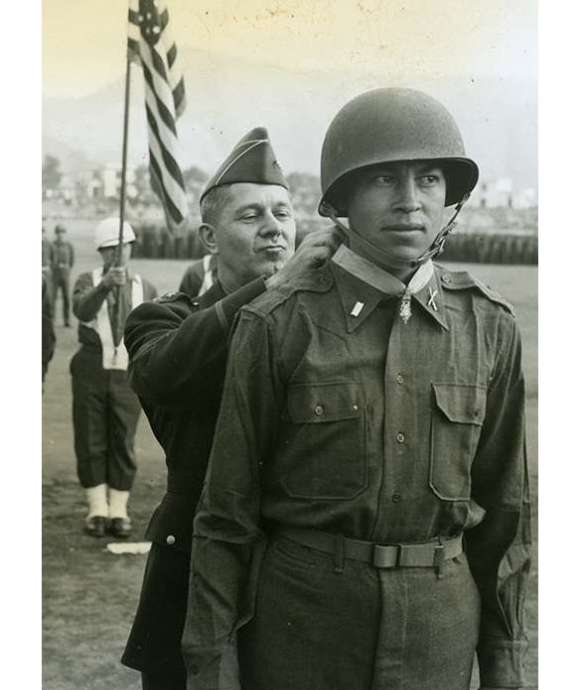
WWII Medal of Honor Recipients
Our Nation’s highest military award for valor is given for action above and beyond the call of duty. Read some of the stories of WWII Medal of Honor recipients in the Pacific theater.
Larry Decuers
Larry Decuers is a former Curator at The National WWII Museum and veteran of the US Army's 101st Airborne Division.
Cite this article:
MLA Citation:
APA Citation:
Chicago Style Citation:
